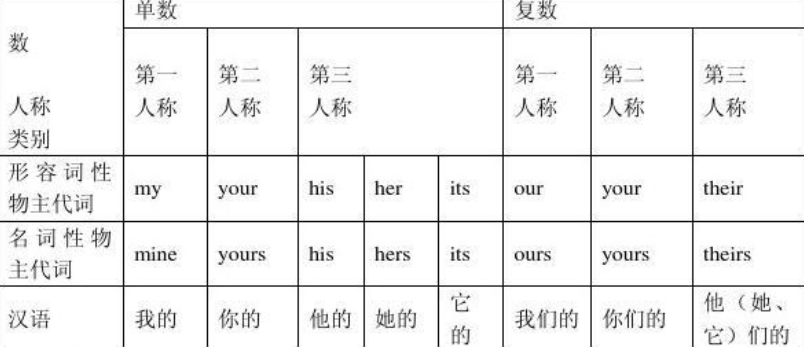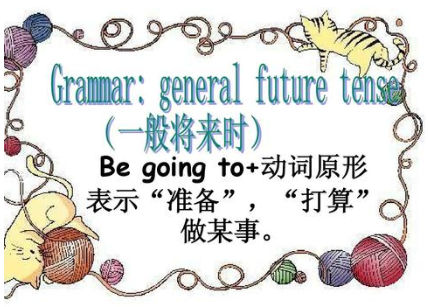be动词原形到底是在什么时候用
- 教育综合
- 2024-09-18 17:44:29
be动词在什么情况下使用原形?
be动词在以下情况用原形。将来时态:will/would/shall/should + be used to be 情态动词后
如:must/can/may/could/might等等+ be
虚拟语气:should +动词原形
如:The teacher required that we should be careful in our lessons

扩展资料:
被动语态
英语被动语态的构成通常是:“be+done”。但“get+done”也可以构成被动语态,用这种结构的句子侧重于动作的结果而不是动作本身。
如: The man got hurt on his way home. 那个男人在回家的路上受伤了。
How did the glass get broken? 杯子怎么破了?
例如:
Chinese is spoken by many people. 中文Chinese是动词speak的承受者。被例如中文常说:我被他打,这就是一种被动。但有时由于句子结构上的需要也要用被动。
例如:
It is not unusual for workers in that region to be paid more than a month it 在句中作形式主语。而不定式to be paid more than a month是句子的逻辑主语。
结合选项全句的意思是:“那个地方的工人一个多月后才得到工资是常有的事”。
一般现在时什么时候用be动词原形
1、与助动词或情态动词do、does、did、shall、will、should、would、may、might、have to、must、need、ought to等一起构成谓语的动词时,要用原形。2、used to+动词原形
used to+动词原形(过去经常…),这结构用于表示过去经常而现在不再有的习惯。比如:
He used to be a science teacher in a private school.
他曾是一所私立学校的自然常识教训。
3、to + 动词原形(不定式表示目的)
在一些句子或者短语后,想要表达做某事的目的,可以直接加上to do形式。也就是说,在任何一个句子后都可以写上to do(to+动词原形)表达作者的目的,期望。
He worked day and night to get the money.
他夜以继日地工作来赚钱。
4、be going to 的含义及结构
含义:表示按计划或安排要发生的动作,也可以表示推测将要或肯定会发生的动作,有“准备;打算”的意思。
结构:be going to 后面需要接动词原形。
注:句子中时常有表示将来的时间状语。
The board of directors are going to hold a meeting this Friday.
周五董事会准备召开会议。(安排)
It is thundering outside. It's going to rain.
看那些乌云,快要下雨了。(推测)

扩展资料
1、see sb. do sth. 看到某人做了某事
I saw a big bird fly over the roof of the house yesterday.
昨天,我看到一只大鸟飞过了屋顶。
2、watch sb. do sth. 观看某人做了某事
I watched the thief steal money from others' pockets.
我看到这个小偷从别人的口袋里偷了钱。
3、notice sb. do sth. 注意到某人做了某事
I noticed him leave the room.
我注意到他离开了房间。
4、observe sb. do sth. 观察到某人做了某事
He has observed the girl come into the house.
他观察到女孩进了屋。
5、look at sb. do sth. 看着某人做了某事
I looked at him do his homework just now.
刚才,我看着他做了他的作业。
6、hear sb. do sth. 听到某人做了某事
I heard him sing an English song half an hour ago.
半个小时前,我听到他唱了一首英文歌曲。
7、listen to sb. do sth. 听着某人做了某事
I listened to him read the passage aloud in English yesterday.
昨天,我听着他用英语朗读了这段话。
8、make sb. do sth. 使某人做某事
I made the students elect a monitor.
我让学生们推选一位班长。
9、let sb. do sth. 让某人做某事
Let me help you wash your clothes.
让我帮你洗衣服吧。
10、have sb. do sth. 使某人做某事
My mom haves me do some housework every weekend.
我妈妈每周末让我做一些家务。
11、feel sb. do sth. 感觉某人做了某事
I felt the rain drop on the roof last night.
昨晚我感觉到雨点打在了屋顶上。
be什么时候用原形
一、系动词be作为系动词(也叫连系动词,link verb)的be,是英语学习者接触最早的用法,而且其用法也很多。其基本含义为“是”,基本用法结构为“主语+be+表语”,也就是我们常说的主系表结构,其中的表语一般都由名词、形容词、数词或表地点、时间等的短语来充当。
系动词be有各种时态的变化,也会和情态动词连用。
(一)be的时态变化
系动词be会有一般现在时、一般过去时、一般将来时、现在完成时、过去完成时等的时态变化。如:
He isa student.
They werein the park yesterday.
It will be cloudy tomorrow.
He has been ill for six days.
It had been three hours before she left the hat shop.
(二)be与情态动词的连用
其用法为:情态动词+系动词be原形。如:
It must be Lucy's book. Her name is on the cover.
It can be very difficult for us to memorize too many words within such a short time.
She should be here on time tomorrow.
更多有关系动词的用法,大家可以戳这里:一站式珍藏:英语九大词类
二、助动词be
作为助动词,be没有具体含义,而是与主要动词一起构成句子的谓语动词。这种情况下,be主要用来构成进行时和被动语态。
(一)进行时态中的be
此时,be可以与主要动词的现在分词一起,构成各种进行时态。如:
He is reading in the library now. (现在进行时)
She wasswimming in the river this time yesterday. (过去进行时)
They will be arriving in Beijing tomorrow. (将来进行时)
We have been learning English for ten years. (现在完成进行时)
(二)被动语态中的be
助动词be能够与主要动词的过去分词一起构成被动语态,即be done结构。如:
Chinese iswidely used around the world nowadays.
The window wasbroken by the naughty boy just now.
Your watch has already beenrepaired.
【注意】
助动词be能够构成特殊句型。如:
1、be going to do
be going to do表示“打算或将要”。如:
He isgoing to visit us next week.
It isgoing to rain soon.
2、be about to do
be about to do表示“刚要,即将”。与be going to do表“将要”不同的是,be about to do表示的是说完话后马上就要去做或是短期内马上就要去做。如:
The plane isabout to take off in five minutes' time.
3、be to do
be to do表示“按计划要做”。如:
One night an angel came to Mary and told her that she wasto have this special boy.
The new store isto be opened tomorrow.
三、特殊句型中的be
(一)There be句型
与上面用法都不同的是,be可以与there一起构成there be句型,用来表示存在。
There is a white ruler on the desk.
There were a great many people in the car race last year.
(二)祈使句中的be
这种情况下,句子一般以Be开头或是Don't be开头,表示命令或建议等。如:
Bepatient! (耐心点!)
Don't be so hard on me! (不要对我们这么严厉!)
(三)虚拟语气中的be
be有时可以放在句首,引起虚拟语气。如:
Be he rich or poor, she will marry him.
Be it true or not, she will see it herself.
此时的be引导的句子其实相当于一个让步状语从句。以上两句话就相当于:
Whether he be rich or poor, she will marry him. (无论他是否有钱,她都会嫁给她。)
Whether it be true or not, she will see it herself. (无论这是否是真的,她都会亲自去见证。)
什么时候用be原型
be动词在以下情况用原形:将来时态will/would/shall/should+be;used to be;情态动词后,如:must/can/may/could/might等+be;虚拟语气:should+动词原形。to be其实是不定式的一种形式,to+动词原型构成动词不定式.这是非谓语动词用法的一种。在英语里,“be+todo”结构可用来表示将来时间,它的具体用法如下:
1.表示“按计划、安排(要做某事)”
We are to meet at the school gate.(我们将在校门口碰头。)
2.表示“命令”
You are to be back before five o'clock.(你须在5点钟以前回来。)
3.表示“职责”
I am to inform you that the meeting will be held in Wuhan.(我谨通知你会议将在武汉召开。)
4.表示“目的”
The prize was to honour him for his great discoveries.(这项奖励是为了对他的重大发现而表示的敬意。)
5.表示“用途”
A pen is to write with.(钢笔是用来写字的。)
6.表示“命中注定”
They were never to meet again.(他们注定以后永远不会再见面了。)
7.表示“应该做(某事)”
What are we to do next?(我们下一步应该怎么办?)
8.表示“可能性”
It's eleven o'clock now. He is to get to Mike's house.(现在11点了,可能他已经到达迈克的家了。)
9.表示“征求对方的意见”
Am I to go on with the work? (这项工作我是不是接着干下去?)
BE动词的原形BE在什么时候用
be 是 系动词的原型一般用在需要用原型的情况
如 不定式:to be
情态动词:can be ,may be,must be,should be
祈使句:Be careful
将来时态:will be
这四个方面基本上就是常用的几个,至于其他的我还没有遇到过,有的话可以探讨探讨
下一篇
返回列表















